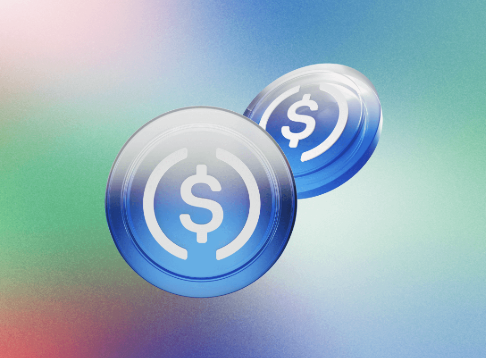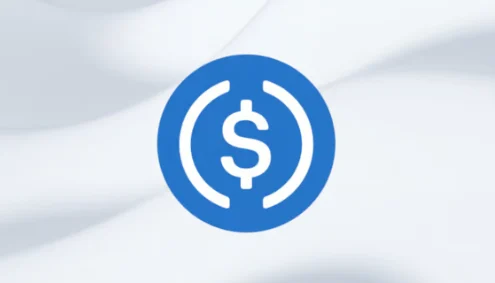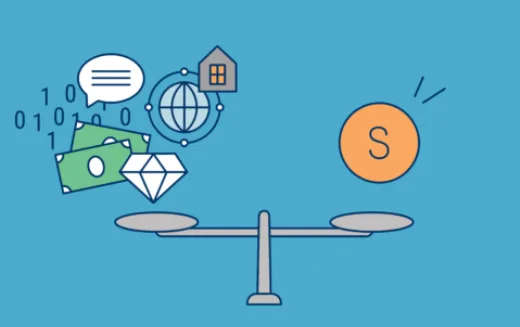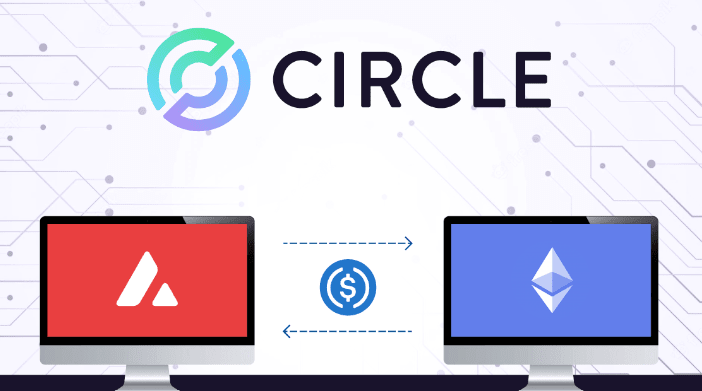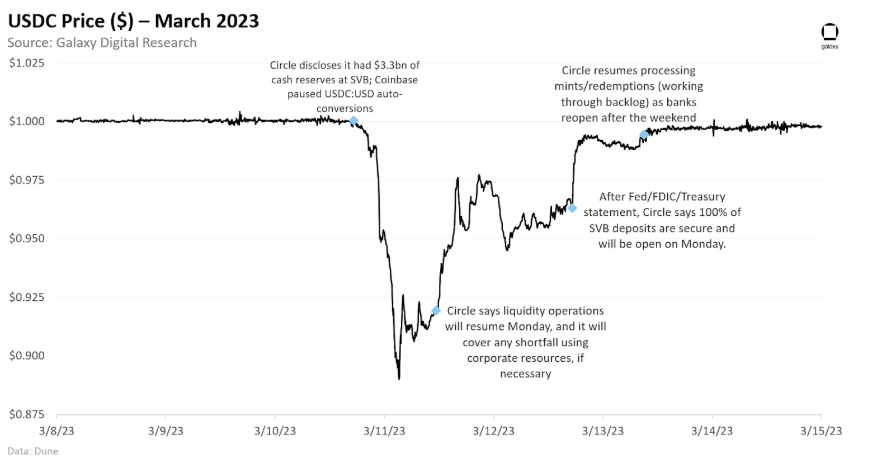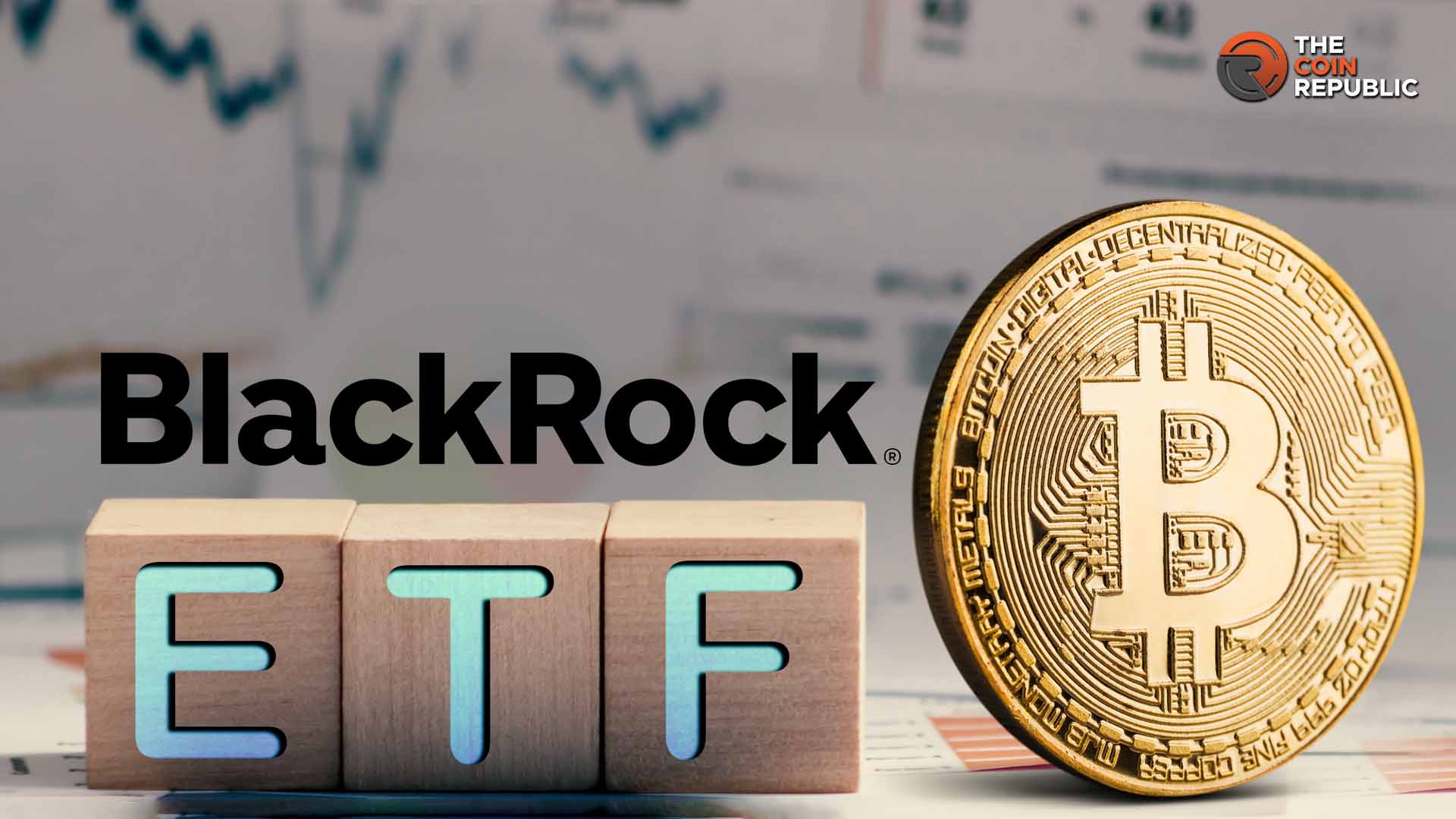USDC, or USD Coin, is a very popular stablecoin in the world of cryptocurrency. It is designed to maintain a value equal to one U.S. dollar, making it attractive for those looking to avoid the volatility that is typically associated with other cryptocurrencies like Bitcoin. Many experts consider USDC to be one of the safest stablecoins available today due to its regulatory backing and transparent operations.
The blockchain technology that underpins USDC ensures quick and secure transactions. It is fully backed by U.S. dollars and dollar-denominated assets, which adds a layer of trust for users. As a regulated stablecoin, USDC operates under strict guidelines, making it an appealing option for both casual investors and those deeply involved in the crypto market.
Investors often seek safe avenues for their funds, especially in an unpredictable market. For those wondering about the safety of using USDC, the consensus among many financial analysts is clear: USDC provides a reliable alternative for those looking to navigate the cryptocurrency landscape with less risk.
Understanding Stablecoins
Stablecoins are designed to offer reliability in value compared to traditional cryptocurrencies. Overall, they aim to lower the volatility often seen in crypto markets.
Stablecoin vs. Cryptocurrency Volatility
Stablecoins are pegged to stable assets, like fiat currencies, to avoid the drastic price swings of cryptocurrencies. For example, a stablecoin might maintain a 1:1 ratio with the US dollar. This allows users to hold value without the risks usually associated with digital currencies.
In contrast, traditional cryptocurrencies like Bitcoin or Ethereum can see very rapid price changes. This volatility poses serious risks for investors and users who need predictable value. By using stablecoins, businesses and individuals can conduct transactions without worrying about sudden price drops or increases.
The predictability of stablecoins helps encourage wider adoption. Users prefer using currencies that won’t unexpectedly fluctuate during transactions.
Types of Stablecoins
There are several types of stablecoins based on their underlying assets and mechanisms. The three main categories include:
-
Fiat-collateralized stablecoins: These are backed by a reserve of fiat currency. For instance, USD Coin (USDC) is backed by US dollar reserves held by reputable companies.
-
Crypto-collateralized stablecoins: These are backed by other cryptocurrencies, often over-collateralized. DAI is an example, using Ethereum assets to maintain stability.
-
Algorithmic stablecoins: These do not use collateral. They rely on algorithms to control the supply of the stablecoin, adjusting it based on market demand. Examples include Terra.
Each type has different benefits and risks, making it crucial for users to understand their choices when selecting stablecoins.
What is USD Coin (USDC)?
USD Coin (USDC) is a stablecoin designed to maintain a 1:1 value with the U.S. dollar. It is a digital currency backed by U.S. dollars and dollar-denominated assets. USDC is widely used in the cryptocurrency market for trading and transactions.
The Role of Circle and Coinbase
USDC was created by the Centre consortium, which includes major players like Circle and Coinbase. Circle is a fintech company focused on creating financial products in the blockchain space. Coinbase is one of the most well-known cryptocurrency exchanges.
Together, these organizations ensure that USDC remains stable and secure. They hold U.S. dollar reserves in dedicated accounts to back each USDC issued. This backing provides confidence to users, as each coin can be redeemed for a dollar.
Circle and Coinbase also conduct regular audits to verify the reserves, giving users a layer of trust. This relationship helps USDC maintain its status as a reliable stablecoin within the volatile crypto market.
Blockchain Framework and Technology
USDC operates on the Ethereum blockchain, which supports smart contracts and decentralized applications. This technology allows USDC to leverage Ethereum’s infrastructure for secure, fast transactions.
Each USDC is issued through a process called minting, where Circle converts U.S. dollars into USDC tokens. Users can then store or trade these tokens in their digital wallets.
Using Ethereum also allows for interoperability with various platforms and dApps (decentralized applications). This gives USDC a wide range of use cases in the crypto ecosystem, like trading and remittances.
With its robust technology and support from reputable organizations, USDC plays a major role in bridging traditional finance and digital currency.
Liquidity and Exchange Support
USDC has significant liquidity and is widely supported across many cryptocurrency platforms. This makes it a preferred choice for traders and investors alike.
Trading USDC on Crypto Platforms
USDC is available on major cryptocurrency exchanges like Coinbase, Binance, and Kraken. These platforms facilitate the buying and selling of USDC against various cryptocurrencies and fiat currencies.
The trading pairs can include popular assets like Bitcoin (BTC) and Ethereum (ETH). High trading volumes on these exchanges also contribute to stable pricing and quick transactions.
Users can easily swap USDC for other digital assets, benefiting from the liquidity these exchanges offer. This access allows for flexibility in trading strategies and helps mitigate the risks associated with price fluctuations.
USDC and Liquidity Providers
Liquidity for USDC also comes from decentralized finance (DeFi) protocols. Automated market makers (AMMs) and liquidity pools support USDC’s trading. These liquidity providers ensure that there are enough tokens available for transactions.
The consistent demand for USDC in DeFi applications enhances its stability and usability. Many liquidity providers offer incentives, like interest or rewards, for holding USDC in liquidity pools.
Overall, this ecosystem promotes healthy liquidity by ensuring that users can exchange USDC quickly and efficiently. By being active in both centralized and decentralized markets, USDC maintains strong market presence and utility.
USDC and Blockchain Infrastructure
USDC operates primarily on blockchain technology, which enhances its safety and efficiency.
Ethereum and ERC-20 Standard
USDC is built on the Ethereum blockchain using the ERC-20 token standard. This standard allows USDC to interact seamlessly with various decentralized applications (dApps) and smart contracts.
The ERC-20 framework provides guidelines for token creation and transactions, ensuring compatibility across the Ethereum ecosystem. This broad support makes it very easy for users to store, trade, and utilize USDC in the Ethereum network.
Key Features of ERC-20 for USDC:
-
Interoperability: Works with many wallets and exchanges.
-
Smart Contracts: Facilitates automated and transparent transactions.
-
Decentralized Applications: Enables integration with various dApps for enhanced usability.
Cross-Chain Compatibility
USDC expanded its reach beyond Ethereum through cross-chain compatibility. Circle, the issuer of USDC, has developed methods to transfer tokens between different blockchains like Tron, Solana, Avalanche, and Algorand.
This adaptability allows users to engage with USDC in various environments while maintaining consistent stability. By enabling cross-chain transactions, USDC promotes wider adoption and accessibility in decentralized finance (DeFi).
Key Benefits of Cross-Chain Compatibility:
-
Lower Fees: Transfers can be more cost-effective across networks.
-
Increased Speed: Transactions can be executed more quickly.
-
Wider Reach: Users can access a broader array of services and platforms.
The ability to move USDC seamlessly across different blockchains positions it as a versatile player in the stablecoin market.
Safety and Transparency of USDC
USDC prioritizes safety and transparency through regular audits and regulatory compliance.
Regular Audits and Reserve Verification
USDC is backed by reserve assets that are verified regularly. Each USDC is designed to maintain a 1:1 peg with the US dollar. This means for every USDC issued, there is an equivalent dollar in reserves.
The reserves are audited monthly by Grant Thornton LLP, a reputable firm, to ensure the funds are properly managed. Users can also access these audit reports. USDC’s reserves are held with trusted partners like BlackRock and The Bank of New York Mellon, which are known for their financial stability.
This robust audit process reassures users that their funds are secure and backed.
Regulatory Oversight
USDC has strong regulatory oversight, which adds another layer of security. The company engages with regulators to ensure compliance with applicable laws. This proactive stance helps mitigate some of the risks associated with the crypto market.
Circle, the issuer of USDC, established relationships with banking institutions, including Silicon Valley Bank, to strengthen its operations. These partnerships enhance the stablecoin’s reliability by ensuring prudent capital management.
Transparency is a hallmark of USDC’s approach. Users are encouraged to verify the backing of their USDC through available reports and compliance documentation. This level of openness is crucial in an industry where trust can be a big concern.
Risks Associated with USDC
Investors should be aware of certain risks related to USDC that could impact their holdings. Two main areas of concern are market volatility and regulatory compliance. These factors can affect the stability and trustworthiness of USDC as a stablecoin.
Market Volatility Impact
USDC is pegged to the U.S. dollar, which aims to maintain a stable value. However, there can be instances where it may temporarily deviate from this peg due to market conditions.
Market volatility can also impact liquidity. If there is a sudden drop in demand for USDC, it may affect its ability to maintain the $1 value.
Additionally, being an Ethereum token means USDC is subject to Ethereum network fluctuations. Unforeseen technical issues or network congestion could create delays or affect the trading of USDC, impacting investor confidence.
Regulatory and Compliance Risks
USDC operates under strict regulatory frameworks, as it is managed by the Centre consortium, formed by Circle and Coinbase. Regulatory changes can introduce risks. For example, if governments impose new rules on stablecoins, it might affect USDC’s operations.
Compliance failures can also result in financial penalties for the managing entities. This could, in turn, impact the availability and stability of USDC.
USDC in Decentralized Finance (DeFi)
USDC plays a major role in decentralized finance (DeFi) by enabling users to lend, borrow, and earn yield on their assets. Its stability and regulatory backing make it a trusted option for participants in the crypto ecosystem.
Lending and Borrowing with USDC
USDC is widely used in DeFi lending protocols, with platforms like Aave and Compound offering opportunities to lend or borrow funds. When users lend USDC, they can earn interest from borrowers. This interest often comes in the form of an annual percentage yield (APY) that can be competitive, sometimes reaching up to 4.25%.
Borrowers can access liquidity by using USDC as collateral while taking loans in other cryptocurrencies. The borrowing costs typically hover around 5.35%. Smart contracts automate these processes, ensuring that transactions are secure and efficient. Users must, however, still carefully manage their positions to avoid liquidation, especially during market volatility.
Earning Yield on USDC
Earning yield on USDC is an attractive option for investors looking to grow their capital. Through various DeFi platforms, users can deposit their USDC and participate in liquidity pools to earn rewards. These rewards can include interest and token incentives.
For instance, lending platforms often provide structured yield options that enable users to earn while maintaining access to their USDC. Some platforms allow users to leverage their holdings, increasing potential returns. Users can track their earnings through crypto wallets that support DeFi interactions.
Comparing USDC with Other Stablecoins
USDC is one of the most popular stablecoins in the cryptocurrency market.
USDC vs. USDT and Others
USDC and USDT are both asset-backed stablecoins, meaning each token is designed to be worth $1. USDT was created by Tether Limited, and is the largest stablecoin by market capitalization. This gives it a massive presence in the crypto market.
USDC, on the other hand, claims to be safer due to monthly attestations by Circle, showing that it has enough reserves. While USDT’s backing has faced scrutiny over the years, USDC is very well known for its regulatory compliance and transparency. Other stablecoins, like DAI, differ more because they are backed by crypto assets, adding complexity to their stability.
Top stablecoins by market cap (Source: CoinMarketCap)
Market Presence and Stability
USDC maintains a solid market presence, often regarded as a safer option among stablecoins. This is mostly due to the fact that its platform is built on transparency, with detailed reports on reserves.
USDT’s market capitalization is significantly larger, making it the go-to stablecoin for many traders, especially during high volatility periods, like when Bitcoin prices fluctuate.
The choice between these stablecoins often depends on the user’s preference for regulatory compliance and a more stable backing approach. USDC users value trust, while USDT provides unmatched liquidity.
Integrations and Use Cases
USDC has various integrations that highlight its practicality in everyday transactions and the broader cryptocurrency landscape. Its structure as a stablecoin makes it especially appealing for both individual and institutional use.
Cross-Border and Digital Payments
USDC offers a strong solution for cross-border payments. Its stable nature helps maintain price stability, making it easier to send and receive funds internationally without the worry of value fluctuations. This is crucial for users who require reliability when dealing with different currencies.
Digital wallets that support USDC can facilitate smooth transactions. With just a few clicks, users can send or receive USDC globally. This not only cuts down on transaction costs but also speeds up the process compared to traditional bank transfers.
For businesses, integrating USDC into payment systems can enhance operational efficiency. It allows companies to accept digital assets while minimizing risks associated with price volatility.
USDC in the Broader Crypto Economy
In the broader cryptocurrency market, USDC has become integral for various financial activities. It is widely used in decentralized finance (DeFi) platforms, enabling trading, lending, and borrowing.
Holders can leverage USDC in these platforms to earn yields. The liquidity it offers also reassures users that they can enter and exit positions as needed. These features enhance its appeal for both casual and serious investors.
Furthermore, USDC allows users to convert their crypto assets during market downturns. This ability protects investments and makes it a useful hedge during periods of volatility in the cryptocurrency market.
Future Outlook of USDC
The future of USDC is shaped by evolving regulations and its increasing adoption in various markets.
Evolving Regulation and Impact on USDC
Regulation plays a key role in the future of USDC. As governments around the world focus on stablecoins, USDC is positioning itself favorably by being compliant with existing laws. The backing from Circle and BlackRock enhances confidence due to their established reputations and adherence to standards.
This regulatory clarity helps USDC maintain its peg to the U.S. dollar, ensuring stability. This is essential for users seeking a reliable store of value. With ongoing discussions about potential regulations, USDC can adapt and reinforce its position as a safe alternative to other stablecoins, like USDT, that may face more scrutiny.
Frequently Asked Questions
What are the risks associated with holding USDC?
Holding USDC carries risks like counterparty risk and market risks. If the companies backing USDC face financial issues, it may impact the stability of the coin. Users should also stay aware of any potential regulatory changes that could affect its usage.
How does USDC maintain its peg to the dollar?
USDC maintains its peg by being backed 1:1 by U.S. dollars. Each USDC token is redeemable for one dollar held in reserve. Regular audits ensure that sufficient reserves exist to back all USDC in circulation.
What security measures does Coinbase implement for USDC transactions?
Coinbase uses various security measures for USDC transactions, including two-factor authentication (2FA) and cold storage for a majority of assets. Regular audits and a strong compliance framework also help protect user funds and transactions.
How does the safety of USDC compare to that of USDT?
USDC is seen as safer than USDT due to its regulatory oversight and backing by reputable financial institutions. While USDT has faced scrutiny over its reserves, USDC’s transparency and strict audit requirements enhance its credibility a lot.
Can the value of USDC ever fluctuate or deviate from its peg?
Under normal circumstances, USDC should not fluctuate in value. Its design allows it to remain stable at one dollar. However, extraordinary market conditions could potentially affect liquidity and temporary pricing.
What are the considerations for using USDC as a long-term savings option?
Using USDC for long-term savings can provide stability, but users must consider potential risks. The impact of inflation and market changes may lessen purchasing power over time. Users should also evaluate the regulatory environment and how it could affect USDC’s use.






